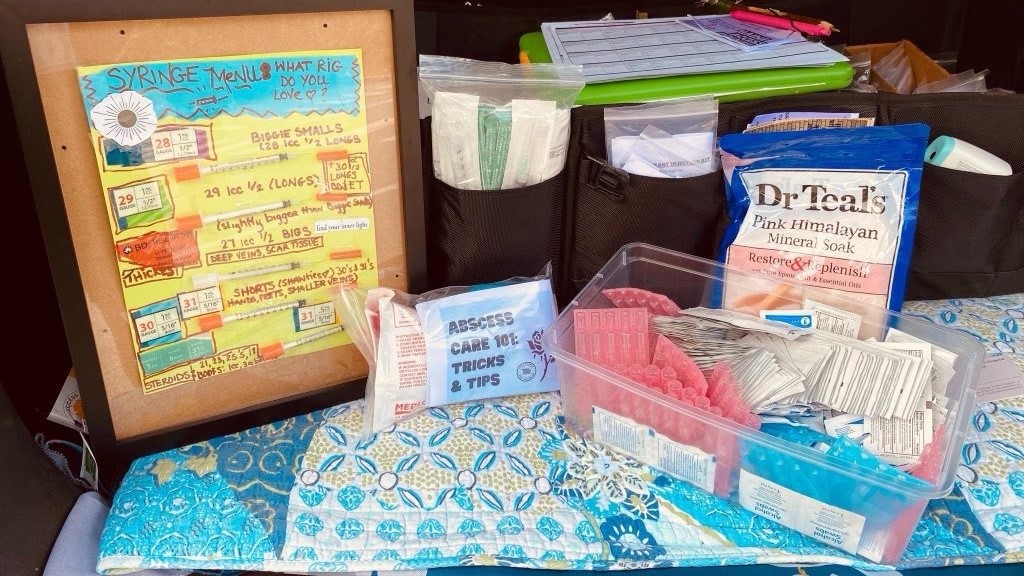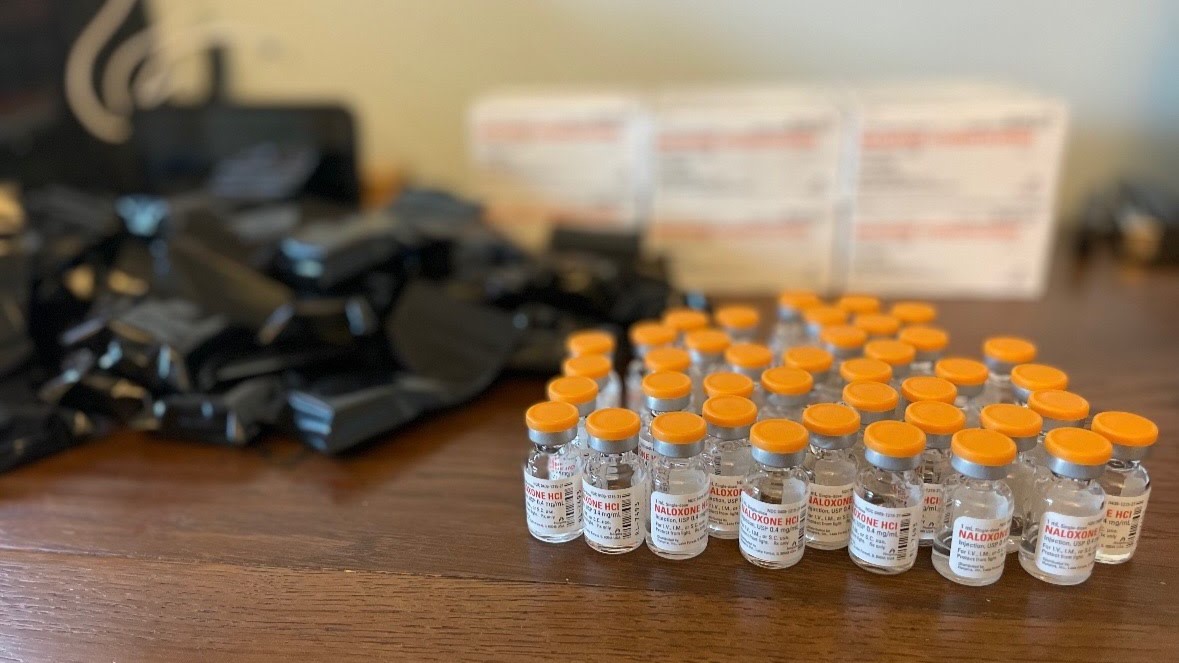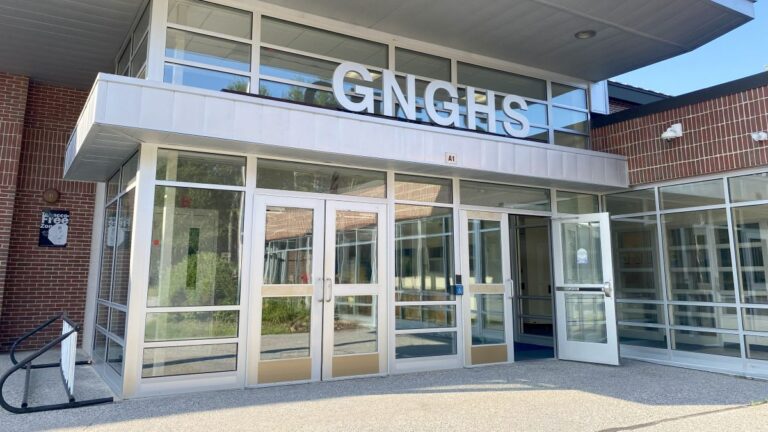At the Maine Recovery Council’s April meeting, Dr. Erik Steele of Gorham described the “1000 Lives” campaign, which aims to reduce Maine opioid-related deaths by 1,000 over the next five years.
“I believe really strongly that if you’re a health care organization or you’re a provider, physician, nurse practitioner, PA, an emergency department leader, you can’t stand on the side while 700 people a year with an average age of 41 perish from this preventable disease, this treatable disease,” the family medicine practitioner told The Maine Monitor.
This effort — a collaboration between the Maine Medical Association, Maine Osteopathic Association and several other health care organizations that developed under Steele’s tenure as MMA president last year and launched in January — is centered around implementing a few “life-saving interventions in all the different parts of the health care system,” he told councilors.
In emergency departments, for example, the interventions include starting patients who have an opioid use disorder on buprenorphine and ensuring they have enough of the drug to last until they can see a provider; discharging patients with naloxone, the opioid-reversing drug; and training staff in how to treat these patients and reduce stigma.
Although Steele did not make a request for funding, the council was given the group’s budget and after the presentation, council member Dr. Paul Vinsel made a motion to fund the campaign at $119,000 a year for two years.
Vinsel, an emergency and addiction medicine physician at Central Maine Medical Center in Lewiston and Tri-County Mental Health Services (which was recently acquired by Spurwink) said he thought the proposal was “pretty low-hanging fruit.”
The answer was no — at least for now.
The 15-member Maine Recovery Council is tasked with overseeing the distribution of half of Maine’s $230 million share of the opioid settlement funds over 17 years. The settlements are the result of years of litigation against pharmaceutical manufacturers, distributors and retailers accused of fueling the epidemic.
Payments from the settling companies began in late 2022 and the council’s balance stands at about $19 million, according to its finance chair, Benjamin Mann, the deputy commissioner of finance for the Maine Department of Health and Human Services. By the end of this year, the balance is expected to grow to about $36 million.
In October, the council voted on a goal: To reduce overdose deaths by 25 percent by the end of 2025. Last year, 605 Maine people died of a confirmed or suspected drug overdose, according to state data.
Steele’s presentation was one of many unofficial pitches the council has received since convening nearly a year and a half ago. So far, the council has yet to distribute any money.
In December, the council approved a budget of $30 million over two years. Of that, it voted unanimously to spend $9 million on efforts related to harm reduction, treatment, prevention and recovery support.
Although the council identified specific recipients for the $9 million, contracts have yet to be finalized and no checks have been signed, chair Pat Kimball told The Monitor.
The council is still working out the details of a grant process it will use to distribute the remaining $21 million. The request for proposals should be finalized in May, but it will likely take another several months before grants are awarded and money is out the door.
Kimball defended the group’s pace as purposefully slow and deliberate.
“We know how important this is,” she said. “We didn’t get here overnight. We’re not going to get out of it overnight.”

Council member Courtney Gary-Allen said the group has received about two dozen letters from organizations and individuals urging it to invest in its efforts to combat the opioid crisis. Just last month, the governor’s senior advisor on housing policy wrote to the council about MaineHousing’s $3.9 million funding gap for the state’s five low-barrier shelters.
In September, 21 government and public safety officials from York County signed a letter asking for the council’s help to close a $7 million shortfall for a new treatment and recovery center there.
Even presentations from the Department of Health and Human Services have included program budgets and recommendations for spending.
As with Vinsel’s motion, the council has largely rebuffed the requests, saying it cannot approve anything until everyone has an equal opportunity to apply for money through the grant process.
Gary-Allen said this has been her “line in the sand.”
“I will not vote for another single penny to go out from the Maine Recovery Council, whether or not that’s a wonderful program like Dr. Vinsel showed last meeting, the 1000 Lives campaign, or even an overdose prevention center, which is something I obviously very much care about,” said Gary-Allen, the organizing director for the Maine Recovery Advocacy Project and an Augusta city councilor.
If she weren’t a council member, “I would probably be outside picketing,” she said. But because she understands the council’s work from the inside, she said she’s able to “give us a little more credit.”
“Maine organizations that serve Maine people deserve the right to have an equal opportunity to be able to get this money,” Gary-Allen said.
Likewise, Chasity Tuell, the Northern Maine director of harm reduction services for Maine Access Points, said she feels “conflicted” because “we’re doing everything right. And like, I still get the frustration of money not getting out the door.”
The council should not be “cherry-picking what we want to fund,” Tuell said. “The process of setting this all up has been frustrating, but I think the outcome of who actually gets this money will be equitable in the end.”

In November, the council held a public forum to solicit opinions on how the money should be spent. More than 50 people testified over nearly six hours.
The suggestions included putting money toward recovery housing, low-barrier shelters, re-entry services, peer coaching, risk reduction programs in schools, restorative justice initiatives, dental care, addiction research, transportation and more.
Many of those who spoke described personal connections through their own history of addiction or that of a friend or family member.
One of the first people to speak was Whitney Parrish Perry, the operations director for Maine Access Points, a harm reduction organization and state-certified syringe service program. She urged the council to support organizations like hers that provide “critical and life-saving support.”
Syringe service programs receive state funding but are restricted by state and federal rules on how they can use it, which has “deeply impacted small community-based organizations like Maine Access Points,” Parrish Perry told The Monitor.
Parrish Perry encouraged the council to fund syringe service programs without the “cumbersome” restrictions that come with state money.
The council listened: Included in the $9 million funding package from December is $75,000 a year for two years to each of Maine’s syringe service program sites, including those run by Maine Access Points. (Tuell and Vinsel abstained from the vote as employees of syringe service programs Maine Access Points and then-Tri-County Mental Health Services, respectively.)
Those contracts are still in the works because the council had to develop its own instead of using existing state contracts, Kimball said.
“While there is a delay in the money getting to us, doing it right the first time is really important,” Parrish Perry said.
Steele, for all his “energy to get going faster and faster” on the 1000 Lives campaign, said he understood the council’s decision to not fund the campaign right away.
“I think it’s important to have a well-developed, transparent, reproducible process that everybody has access to and can understand,” he said. “I think the council is making a good decision to do that. Otherwise they’re hard-pressed, I think, to really fulfill their obligation as the council to be responsible with this public trust.”
Correction: This story initially gave the incorrect amount for Dr. Paul Vinsel’s motion to fund the 1000 Lives campaign. It was $119,000, not $119 million. It was also updated to say that all of Maine’s 17 syringe service sites were eligible for $75,000 in funding, not the programs that oversee them.







